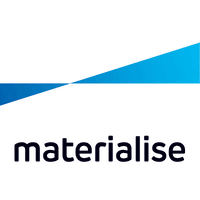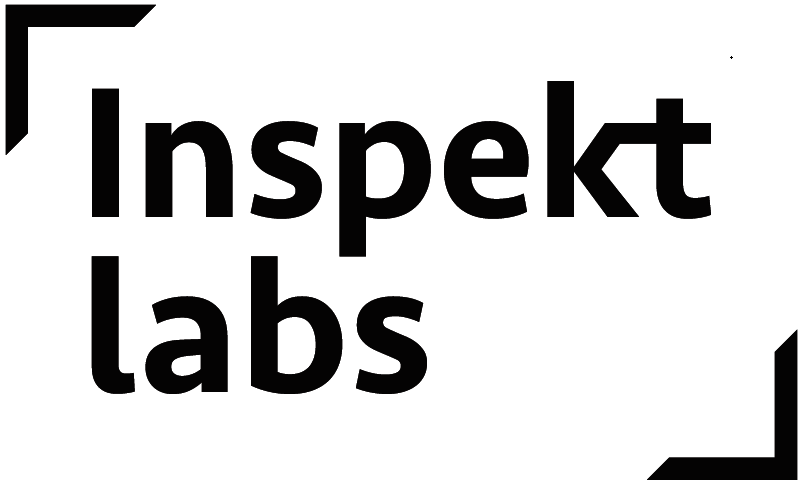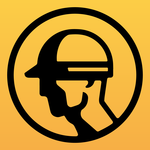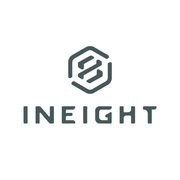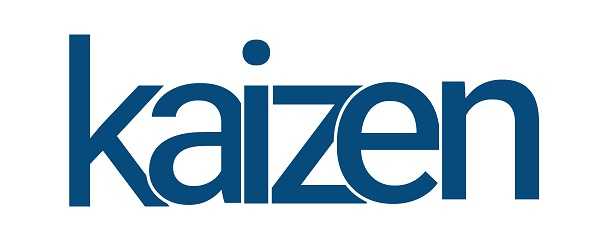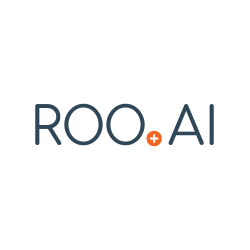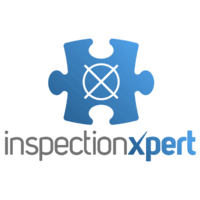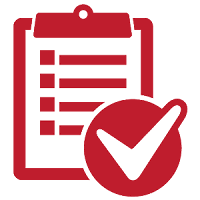What Is Inspection Software?
Inspection software is a strong tool that streamlines and optimizes the inspection process for businesses and organizations. This digital technology automates and simplifies inspection procedures, allowing users to be more efficient and accurate. One of the most important characteristics of inspection software is its capacity to generate customizable inspection checklists that may be tailored to individual sectors, regulations, and business requirements.
This makes it a versatile instrument that may be utilized in a wide range of industries, including manufacturing, construction, and healthcare. In addition to checklists, inspection software has powerful reporting features, allowing users to create detailed reports and dashboards with visual representations of inspection data. This information can be used to discover patterns, monitor performance, and make data-driven decisions to improve procedures and optimise operations.
Furthermore, inspection software provides real-time data synchronization, which eliminates the need for manual data entry and allows for immediate access to inspection results. This ensures that all staff, from inspectors to managers, have access to the most current information, resulting in improved communication and collaboration.
Furthermore, inspection software frequently includes a mobile app, making it simple for on-site inspectors to conduct inspections from their smartphone or tablet. This not only saves time and labor, but also lowers the possibility of human error. Overall, investing in inspection software can benefit firms by increasing compliance, efficiency, and data management. With its customizable features and real-time data synchronization, it is an invaluable tool for any firm trying to improve its inspection processes and achieve better results.
What Are The Recent Trends In Inspection Software?
The inspection process has progressed greatly over time, with the advancement of technology resulting in the development of new inspection software. These instruments have transformed how inspections are performed, making them more efficient and accurate. To make an informed purchasing decision, a potential buyer must stay up to date on the latest advances in inspection software.
Here are the most recent trends in inspection software that you should consider before making a purchase.
1. Cloud-Based Software: One of the most major changes in inspection software is the transition to cloud-based solutions. This means that the software is stored on a remote server and accessed via the internet. Inspectors can use cloud-based software to read and update inspection reports from any internet-enabled device, at any time. This trend has made inspection processes more adaptable and efficient, enabling for rapid and easy collaboration among inspectors, clients, and other stakeholders.
2. Mobile Inspection Apps: Mobile inspection apps have become increasingly popular in recent years due to their ease and efficiency. These apps enable inspectors to conduct on-site inspections and generate reports instantaneously from their mobile devices. This reduces the need for paper reports, lowering the likelihood of errors and delays. Mobile inspection apps also include capabilities like real-time data sync, photo and video integration, and digital signatures, which improve the inspection process's thoroughness and accuracy.
3. Integration Of IoT And AI: The combination of inspection software, IoT (Internet of Things) devices, and artificial intelligence has also arisen as a popular trend. This combination enables automated data collection, analysis, and reporting, which reduces workload and the risk of human error. IoT devices, such as sensors and cameras, can gather and send data in real time, and AI algorithms can evaluate it to generate actionable insights. This tendency has increased inspection accuracy and efficiency, making them more trusted for both inspectors and clients.
4. Customisation And Data Management: Another development in inspection software is a focus on customisation and data management. Many software solutions allow you to customize inspection templates based on industry-specific needs. This enables a more extensive and appropriate examination process. Furthermore, data management functions like data storage, backup, and retrieval have become critical for maintaining the security and accessibility of inspection reports.
Benefits Of Using Inspection Software
Inspection software is an effective tool that streamlines and simplifies the inspection process for organizations in various industries. Inspection software may improve efficiency, accuracy, and compliance in a wide range of industries, including manufacturing, construction, healthcare, and food safety.
We'll look at the main benefits of using inspection software to help you make informed business decisions.
1. Improved Efficiency And Time Savings: One of the primary benefits of using inspection software is that it boosts efficiency while saving time. Traditional inspection techniques, such as paper checklists and manual data entry, are time intensive and prone to human error. Inspection software automates the entire process, from scheduling and data collection to report production, allowing inspectors to perform more efficiently and precisely.
2. Real-Time Data Collection And Analysis: Inspection software enables data collection in real time, eliminating the need for manual data entry, which is time-consuming and error-prone. This means that the information is more accurate, up to date, and available immediately. The software also contains extensive data analysis features, allowing businesses to quickly identify patterns, trends, and areas for improvement.
3. Improved Compliance And Risk Management: Regulated industries, such as healthcare and food safety, demand tight adherence. Inspection software can help firms stay compliant by providing customizable checklists and audit templates that meet industry-specific standards. It also enables businesses to monitor compliance and identify possible hazards, allowing them to take corrective action before issues arise.
4. Improved Communication And Collaboration: Inspection software offers a unified platform for all stakeholders involved in the inspection process, including inspectors, managers, and team members. This means that all stakeholders may access the same data in real time, enhancing communication, collaboration, and decision-making. This capacity is especially valuable for businesses with remote employees or many locations.
5. Cost Reductions: Implementing inspection software can result in significant cost savings for businesses. Businesses that phase out paper-based systems can save money on printing, storage, and shipping. Furthermore, the software can reduce the time and resources needed to conduct inspections, allowing businesses to better allocate their resources.
6. Customization And Scalability: Inspection software is extremely configurable, allowing firms to tailor it to their own needs and requirements. It also offers scalability, which means that if your company grows, the program may be upgraded to accommodate an increasing number of inspections, locations, or individuals.
Important Factors To Consider While Purchasing Inspection Software?
Introduction: In today's fast-paced corporate world, having the correct tools and technology is critical for streamlining processes, increasing efficiency, and maintaining quality control. This is especially true for firms that rely on inspections to uphold safety, compliance, and high-quality standards. As a result, investing in a solid and dependable inspection software can be transformative for any firm. However, with so many options available in the market, it can be difficult to choose the best one.
In this buyer's guide, we'll go over the most crucial elements to consider when selecting inspection software so you can make an informed decision.
1. Intuitive User Interface: The first and most important element to consider when selecting inspection software is the user interface. The software's interface should be intuitive and simple to explore and understand. This is critical since it determines the software's usability and acceptance inside your organization. An intuitive interface will also shorten your team's learning curve, saving time and resources on training.
2. Versatility And Customizability: Each firm has unique inspection needs and requirements. As a result, it is critical to acquire software that is adaptable and adjustable to your individual requirements. This includes the flexibility to design custom inspection checklists, add and delete fields, and tailor reports to your organization's needs. Furthermore, the software should be flexible to many sorts of inspections, such as safety, quality control, and compliance checks.
3. Integration And Compatibility: Another essential consideration is how well the inspection software integrates and works with your existing systems and processes. The program should work easily with your existing systems, including data management systems, report production tools, and inspection software. This will provide a seamless and effective workflow while also eliminating data duplication and tedious work.
4. Data Security And Privacy: Given the sensitive data obtained during inspections, it is critical to select software that emphasizes data security and privacy. The program should include strong security mechanisms such as data encryption, user access controls, and regular backups. It is also critical to check that the software conforms with applicable data protection standards, such as GDPR or HIPAA, based on your company's location and industry.
5. Reporting And Analytics: Inspection software should simplify the inspection process while simultaneously providing significant insights and data for analysis. As a result, it is critical to choose software that has complete reporting and analytics features. This will assist you in identifying patterns, trends, and areas for improvement, which you can then utilize to make data-driven decisions and continually enhance your operations.
6. Mobile Compatibility: In today's digital world, flexibility and mobility are essential for enterprises. This includes the usage of inspection software as well. Choose mobile-friendly software that allows you to conduct inspections on the go, even in rural areas without internet connectivity. This will increase the efficiency and accuracy of your inspections while also streamlining your workflow.
What Are The Key Features To Look For In Inspection Software?
Inspection software has become an indispensable tool for businesses and organizations of all kinds looking to automate and improve their inspection operations. Having the correct inspection software can considerably improve productivity and accuracy when performing quality control, safety audits, or compliance checks. However, with so many alternatives on the market, it can be difficult to choose which is the greatest suit for your individual needs.
To help you make an informed decision, here are some crucial characteristics to look for in inspection software.
1. Customizable Checklists And Forms: One of the most significant things to look for when choosing inspection software is the ability to build and customize checklists and forms. This allows you to customize the software to meet your individual industry and inspection needs, resulting in extensive and reliable data collection.
2. Offline Capabilities: Inspection software should be able to operate offline, particularly in rural or low-connectivity areas. This ensures that inspections and data gathering continue uninterrupted, with no chance of information loss due to internet connectivity concerns.
3. Image And Video Capture: Visual evidence is critical during the inspection process. Make sure to use software that allows you to record and attach photographs and videos immediately to your inspection report. This will provide for a more thorough knowledge of the inspection findings and any relevant difficulties.
4. Real-Time Reporting: The best inspection software will support real-time reporting, giving you rapid access to the data gathered during the inspection. This enables for more timely decision-making and actions, lowering the risk of potential safety or compliance issues.
5. Data Analysis And Trend Tracking: Data analysis tools are critical for discovering trends and patterns in inspection results. Look for software with built-in analytics and reporting capabilities to help you make data-driven decisions and measure your success over time.
6. Integration With Other Systems: Look for software that can work seamlessly with other systems like maintenance, inventory, or project management software. This enables a more simplified and efficient data flow, saving you time and effort.
7. Mobile And Desktop Accessibility: Make sure the inspection software you chose is compatible with both mobile and desktop computers. This provides flexibility and accessibility, whether you're conducting inspections on-site or at the office.
Why Do Businesses Need Inspection Software?
Inspection software helps businesses streamline their inspection and compliance procedures, assuring efficiency, accuracy, and compliance. With the growing complexity and frequency of inspections, using manual or antiquated procedures can be time-consuming and error-prone. Inspection software provides a modern and digital solution for businesses to manage inspections successfully.
The main advantages of employing inspection software are increased efficiency, accuracy, and timely compliance. A unified platform enables organizations to quickly organize and track inspections, allocate responsibilities to team members, and access real-time data. This not only saves time and effort, but also lowers the likelihood of human error. Furthermore, inspection software streamlines the inspection process by eliminating the need for human data entry and paperwork.
It enables organizations to create customizable and digital inspection forms, record and save photos and videos, and generate detailed reports in a fraction of the time. Compliance is another significant consideration for firms. Noncompliance not only incurs significant penalties, but also harms the brand's reputation. Inspection software helps firms remain on top of their compliance duties by sending alerts and reminders for deadlines, as well as tracking and documenting inspection data.
Furthermore, advanced capabilities such as real-time analytics and data visualization enable businesses to obtain vital insights into their operations and make data-driven decisions. This can result in enhanced performance, cost savings, and better decision-making. Inspection software not only streamlines inspections but also provides capabilities for team cooperation and communication.
This enables seamless cooperation among team members, and with real-time data availability, firms can make educated decisions and address issues quickly. Overall, with the increasing demands for efficiency, accuracy, and compliance in the business sector, inspection software has become an essential tool for companies to remain ahead of their inspections. Businesses that invest in reliable inspection software can save time, eliminate errors, maintain compliance, and improve overall performance.
How Much Time Is Required To Implement Inspection Software?
The implementation time for inspection software varies according to the program and the size of the company. In average, properly implementing and integrating inspection software into your processes might take anywhere from a few weeks and a few months. One of the most important elements influencing implementation time is software customisation to meet your individual demands and operations.
Implementing software that requires substantial modification may take longer. On the other side, if the program is more standardized and requires little customisation, implementation time may be reduced. The intricacy of your operations, as well as the amount of data and procedures that must be transferred to the new software, can also have an impact on installation timeline.
If your company has a lot of data and complicated operations, it may take longer to migrate everything to the new platform and verify it works properly. Furthermore, the installation time might be determined by your organization's readiness for the transfer to the new software. If you have a well-defined plan and dedicated resources to help with the implementation process, you can drastically minimize the total time necessary.
On the other hand, if your organization is not well prepared, it can cause delays and extend the implementation period. It is critical to remember that the implementation time is an investment in the long-term value of adopting inspection software. With sufficient preparation and resources, the implementation process may go smoothly and efficiently. It is critical to collaborate closely with the software vendor to set a realistic timeframe and ensure a successful installation.
What Is The Level Of Customization Available In Inspection Software?
One of the most important considerations when selecting inspection software is the level of customization provided. This refers to the software's capacity to be customized to match the unique needs and specifications of your company. The requirement for configurable software has grown in importance as the inspection process becomes more efficient and accurate. Customizability lets you tailor the software to your own inspection methods, workflows, and reporting needs. This not only speeds up the inspection process, but it also ensures that you collect and analyze data that is important to your organization. As a result, you may make more informed decisions and boost overall business performance. Inspection software suppliers offer varying levels of customisation. Some software may allow for minimal customisation, such as adding business logos and branding, while others may provide more extensive functions, such as generating custom fields and templates or interacting with other software systems.
When determining the extent of customization in inspection software, consider the following major features:
1. Customizable Inspection Checklists: Some inspection software lets you design and adapt inspection checklists to meet your individual needs. This allows you to modify the checklist to your sector, corporate requirements, and regulations, resulting in a thorough review of your assets.
2. Custom Report Templates: The ability to create customized report templates is critical for producing accurate and informative reports. Look for software that allows you to design custom report templates that include your logo, company name, and any other relevant information.
3. Configurable Workflows: Configurable workflows enable you to set up and customize the inspection process to match your own business operations. This ensures that the inspection procedure is consistent and accurate, regardless of the inspector or the location.
4. Integration And API: The software's ability to integrate with other systems and provide API access increases the level of customisation. This enables you to synchronize data, streamline procedures, and evaluate data from numerous platforms.
Which Industries Can Benefit The Most From Inspection Software?
Inspection software is a strong tool that may provide several benefits to firms across a variety of industries. Inspection software has shown to be a great asset for businesses of all sizes, enhancing productivity and accuracy while also raising compliance and lowering expenses. However, some industries will gain more from this technology than others.
We'll look at the top industries that can benefit the most from integrating inspection software into their operations.
1. Manufacturing Industry: The manufacturing business is no stranger to stringent quality control and safety requirements. Manufacturers can use inspection software to automate the inspection process, uncover defects and errors, and guarantee that their goods comply with industry rules. This not only saves time and resources, but it also helps to avoid costly recalls and damage to brand reputation.
2. Construction Industry: The construction business has various stages and stakeholders, therefore incorporating inspection software is critical for ensuring compliance and tracking progress. Real-time data collection and analysis allows construction businesses to spot possible issues and address them quickly, resulting in enhanced productivity and fewer project delays.
3. Healthcare Industry: The healthcare business handles a large amount of data and sensitive information, therefore maintaining compliance and accuracy is crucial. Inspection software enables healthcare firms to streamline processes, increase patient safety, and meet tight regulatory requirements.
4. Food & Beverage Industry: To preserve consumer health and happiness, the food and beverage business must maintain stringent safety and quality standards. Inspection software can assist food and beverage companies automate quality tests, track inventory, and manage suppliers, resulting in improved compliance and efficiency.
5. Transportation Industry: The transportation business, including airlines and shipping corporations, must follow safety laws to protect passengers, cargo, and personnel. Inspection software enables transportation businesses to streamline their maintenance procedures, monitor safety practices, and track compliance, resulting in enhanced safety and lower operational expenses.
Conclusion
Finally, investing in quality inspection software can help your firm save time and money, improve accuracy, and increase overall productivity. By carefully analyzing your individual needs and requirements, as well as evaluating the features and capabilities of several solutions, you can make an informed selection and select software that will fulfill your expectations and assist you in achieving your company objectives.
It is critical to remember that the best inspection software is not generally the most expensive, but rather the one that meets your specific industry and business requirements. When making your decision, take into account customization options, user friendliness, support and training alternatives, and scalability. Furthermore, make sure to carefully evaluate and familiarize yourself with the program before fully integrating it into your workflow.
This will ensure a smooth transition and that all employees are comfortable with the new system. Finally, don't be hesitant to contact customer service if you have any questions or issues. A dependable and friendly customer care crew can significantly improve your entire experience with the software.
To summarize, well-chosen inspection software can streamline your inspection operations, increase efficiency, and help your company remain competitive in today's fast-paced industry. By taking into account all of the relevant elements and completing extensive research, you can make an informed decision and find software that will be an essential asset to your business.





